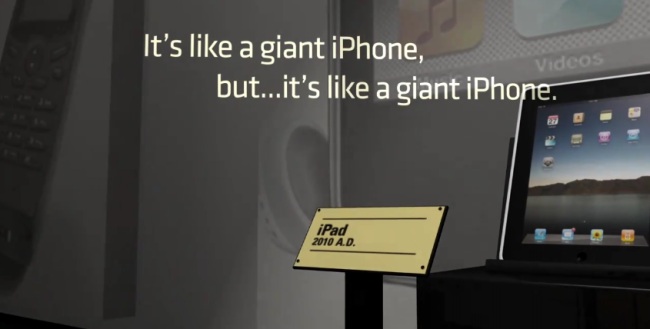
Motorola is pretty excited about its upcoming Android tablet. So excited, in fact, that it has put out a YouTube video with the entire “history” of tablets beginning with the Egyptian hieroglyphic tablet and moving on to the Ten Commandments tablet and even the Rosetta Stone. The teaser also takes a few jabs at the competition, calling the iPad and Samsung Galaxy Tabs great, but mostly just large phones, but falls short of showing Motorola’s new device or actually saying anything about it. Judging from the little flying bee in the video, we can confirm it will run Android 3.0 (Honeycomb), but we must wait until the Consumer Electronics Show (CES) in January to find out anything more.
Or do we? The device is likely the same one that Googler Andy Rubin showed off at the All Things D conference a couple weeks ago. Leaked stats and pictures of the new tablet have already surfaced as well. If rumors prove correct, it will have 32 GB of internal memory, 5 MP camera on the back, 2 MP front-facing camera, 1280×800 pixel touchscreen, 1 GHz main processor, Nvidia Tegra 2 T20 dual-core graphic processor, 512 MB of RAM, 10 inch multi-touch screen, 3G and faster LTE support, Bluetooth, Wi-Fi, and a Micro SD slot for up to 32 GB more storage. Now all we need are some hands-on impressions. We should be getting those in a couple weeks.
Motorola is definitely building up the hype. Hopefully it can deliver on it. CES starts on January 6, 2011. The teaser video is below.


